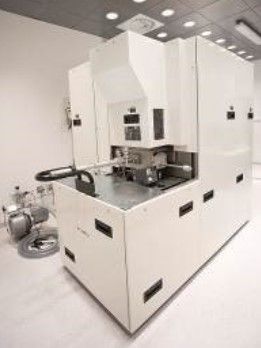I agree my information will be processed in accordance with the ENSEMBLE³ Privacy Policy.
Sign up for our newsletter
I Privacy policy |
Functional Materials Technology Group
Optical Nanocharacterization Group
Inverse Materials Design Group
Next-Generation Energy Systems Group
Biophotonic Applications Group
Solar Energy Conversion Group
Oxide Single Crystals Group
A3B5 Compound Semiconductors Group
Functional Materials Laboratory
Oxide Single Crystals Laboratory
Materials Characterization Laboratory
III-V Compound Semiconductors Laboratory
Contact
Ensemble3 sp. z o.o.
01-919 Warsaw
133 Wólczyńska St.
NIP 1182211096
KRS 0000858669
Secondary Ion Mass Spectrometry (SIMS), CAMECA IMS SC Ultra (Ł-IMiF)
SIMS is a very precise surface sensitive analytical technique. A sample is bombarded with a primary ion beam which leads to the sputtering of the matter from its surface. A small part of the sputtered particles are charged (secondary ions). They are collected and undergo mass spectral analysis which provides information about their mass to charge ratio. A proper interpretation allows determination of elemental and/or isotopic composition of a sample. Subsequent layers of the sample are removed during analysis and thus it is possible to determine composition variation as a function of depth, creating so called depth profiles. The lateral analysis of the signal allows to create 3D images and cross-section views of a given sample. SIMS is very sensitive for dopants and contamination analysis. For most elements and matrix materials, the detection limit is in the range of 1015-1016 atms/cm3, in some cases as good as 1012 atms/cm3. The depth resolution can be below 1 nm which is invaluable for characterization of ultra-thin films, such as tunnel junctions, superlattices or 2D materials like graphene or boron nitride. Main applications: i) elemental and/or isotopic composition of a sample; ii) contamination monitoring; iii) dopants distribution; iv) diffusion quantification; v) structure and stability of layers; vi) failure analysis of devices.


